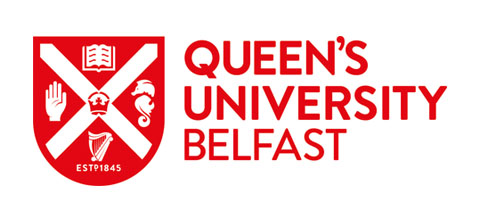Our City on Celluloid: Elephant
21 January 2022
As we celebrate the release of Kenneth Branagh’s Belfast at QFT, LUMI programmer Fionntán Macdonald takes a look back at the city’s storied history on the silver screen. This time Fionntán studies Alan Clarke's Elephant.

Initially a small TV vehicle, Elephant (1989) immediately courted controversy with its bare bones depiction of political violence, and went on to inspire filmmakers much farther afield than the streets of Belfast where is is based. This minimalist short film with a visceral documentary realist style approaches the then ongoing conflict and focuses almost solely on the calm and casual administration of violence.
Directed by Alan Clarke and produced by future auteur Danny Boyle, Elephant was conceptualised as a visualisation of Bernard MacLaverty’s take that, “for some of us ‘The Troubles’ is the elephant in our living room”, and this quotation epitomises the dire social situation of Northern Ireland at the time and our collective refusal to meaningfully address it.
Clarke was an actively social filmmaker, an auteur unafraid of contentious content. His entire catalogue can be viewed as an exercise in social commentary from a compassionate and conscious man, who worked diligently to excise the compassionate eye from his camera. Such that from the very opening of this film, the reality of what you witness will jar with your expectations; be prepared.
The immediate focus is on the mundane and, quite literally, pedestrian as a lone figure approaches the camera on foot in a grey Belfast street. Here, Clarke immediately and succinctly establishes his visual motifs before swiftly ripping away the false sense of security he lulls us into. Our introductory figure is followed by a series of tracking and panning shots without formality, the silent movement of the camera is almost hypnotic, before a shotgun blast detonates the tranquility.
What Clarke has done here is promptly establish the formulae that will continue throughout: prosaic tableaus of humdrum life disrupted by intense burst of bloody violence. These illustrations of armed assaults make up the entirely minimalistic film, with very few cuts and shots that linger uncomfortably on the calm retreats of the assailants and the eviscerated corpses they leave behind, which just moments previously had been living beings with no discernible difference from their executioners.
In fact, all the figures depicted are conspicuously inconspicuous, clad largely in grey tones that almost camouflages them against the industrial landscape. These workaday assassins could be anyone and that is the disquieting point Clarke is making. Each of the killings depicted in Elephant were based on real murders that took place in Belfast, details lifted from authentic police reports. Each was a fully realised individual wiped from our city’s streets with detached brutality and left precisely as we see them depicted here: voiceless, now just a conflict statistic.
Clarke’s minimalism is not derivative of lack of effort or development in his ideas but rather a calculated abstraction that casts the viewer in the uncomfortable role of voyeur. We watch, from safety, as individuals are destroyed before us, denied of all agency. In this way the filmmakers are interrogating the dehumanising effect of societal violence. It is notable, in that regard, that the few dramatic edits within the film’s runtime tend to be smash cuts to weapons firing, the editor emulating effect of the gunman’s bullet.
Suitably, the settings of the murders are not stylised but alarmingly banal, set in the domestic and recreational spaces of homes, bars and football pitches. The arenas of our day-to-day are invaded by bloodshed utterly unceremoniously, and in that way this small film may capture Belfast’s distraught past better than any other cinematic entry.
Throughout his career Clarke specialised in documentary realism, a style of filmmaking which prioritises the authentic presentation of events above all stylistic concerns, and here he has stripped our domestic conflict down to its foundations by employing this style. There is not even any dialogue; no context, history or even motivation provided. No mention of who these assassins are aligned to. That is not relevant to the filmmakers, only the tragedy and the brutal loss of life.
As we have moved farther from our violent past, depictions of our environment on screen have thankfully become more positive. While we will look at such films going forward, it is still important to cast our eye back to a darker time so that we never forget the elephant in our living room.
- written by LUMI programmer Fionntán Macdonald




